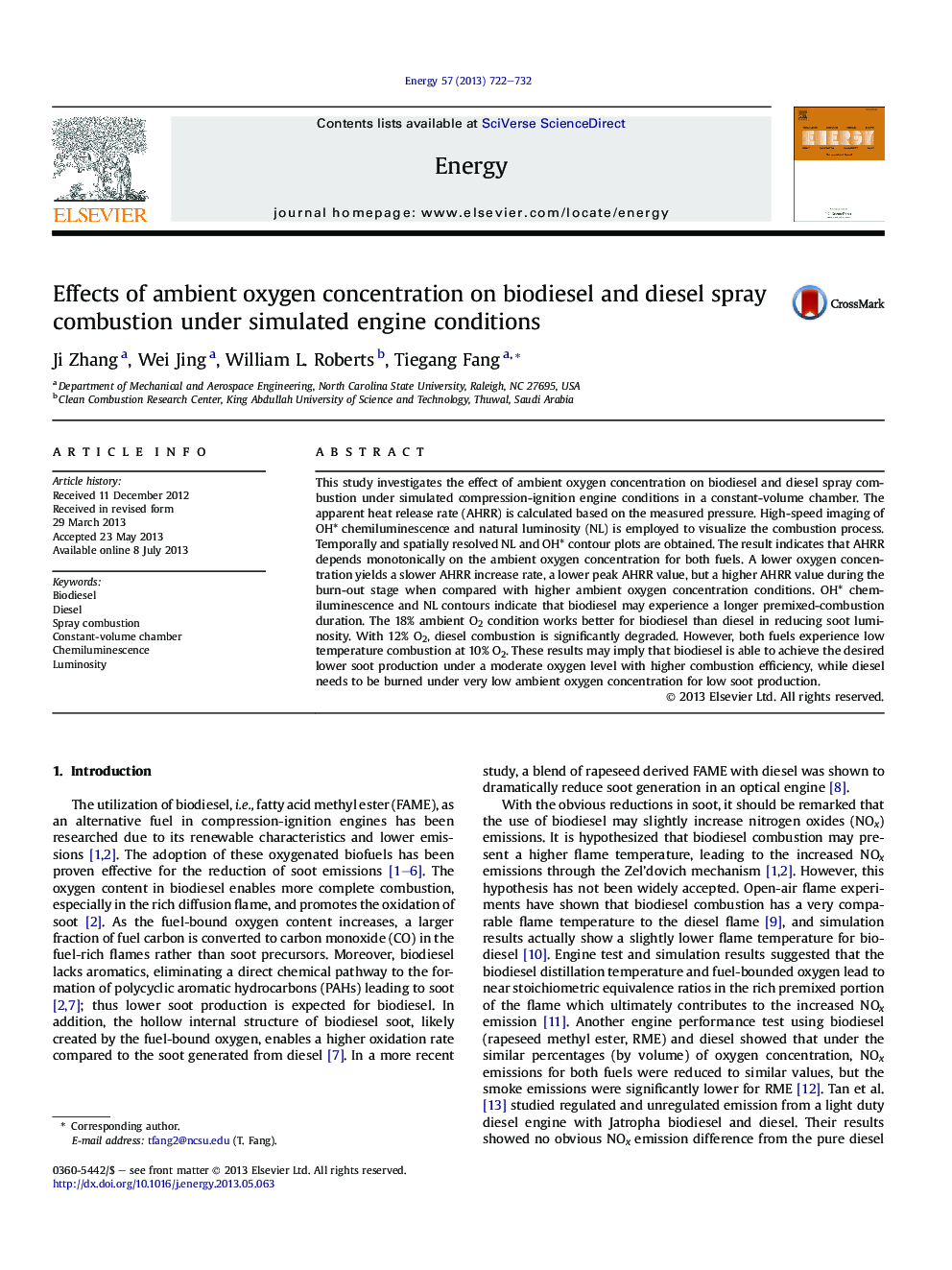| Article ID | Journal | Published Year | Pages | File Type |
|---|---|---|---|---|
| 1733115 | Energy | 2013 | 11 Pages |
•Simultaneous spatial–temporal contours of natural luminosity and OH* chemiluminescence.•Studied ambient oxygen concentration effects on spray combustion for biodiesel and diesel.•Biodiesel and diesel require different oxygen levels for combustion with low soot luminosity.•Low temperature and low sooting combustion occurs for both fuels under very low oxygen concentration.
This study investigates the effect of ambient oxygen concentration on biodiesel and diesel spray combustion under simulated compression-ignition engine conditions in a constant-volume chamber. The apparent heat release rate (AHRR) is calculated based on the measured pressure. High-speed imaging of OH* chemiluminescence and natural luminosity (NL) is employed to visualize the combustion process. Temporally and spatially resolved NL and OH* contour plots are obtained. The result indicates that AHRR depends monotonically on the ambient oxygen concentration for both fuels. A lower oxygen concentration yields a slower AHRR increase rate, a lower peak AHRR value, but a higher AHRR value during the burn-out stage when compared with higher ambient oxygen concentration conditions. OH* chemiluminescence and NL contours indicate that biodiesel may experience a longer premixed-combustion duration. The 18% ambient O2 condition works better for biodiesel than diesel in reducing soot luminosity. With 12% O2, diesel combustion is significantly degraded. However, both fuels experience low temperature combustion at 10% O2. These results may imply that biodiesel is able to achieve the desired lower soot production under a moderate oxygen level with higher combustion efficiency, while diesel needs to be burned under very low ambient oxygen concentration for low soot production.
